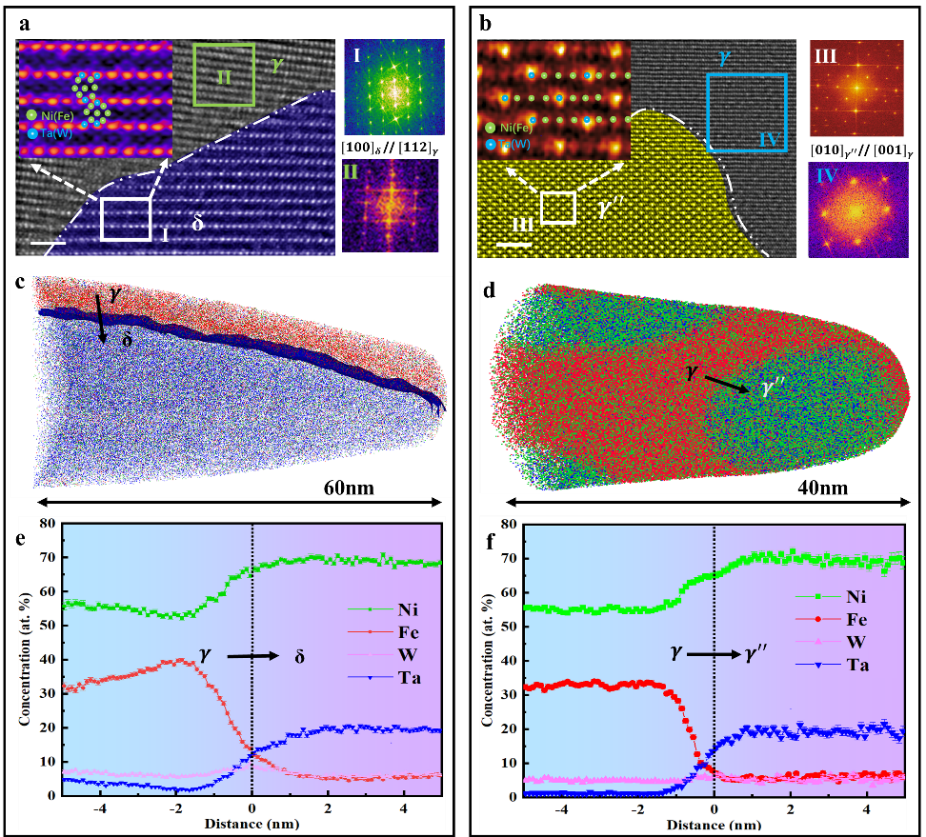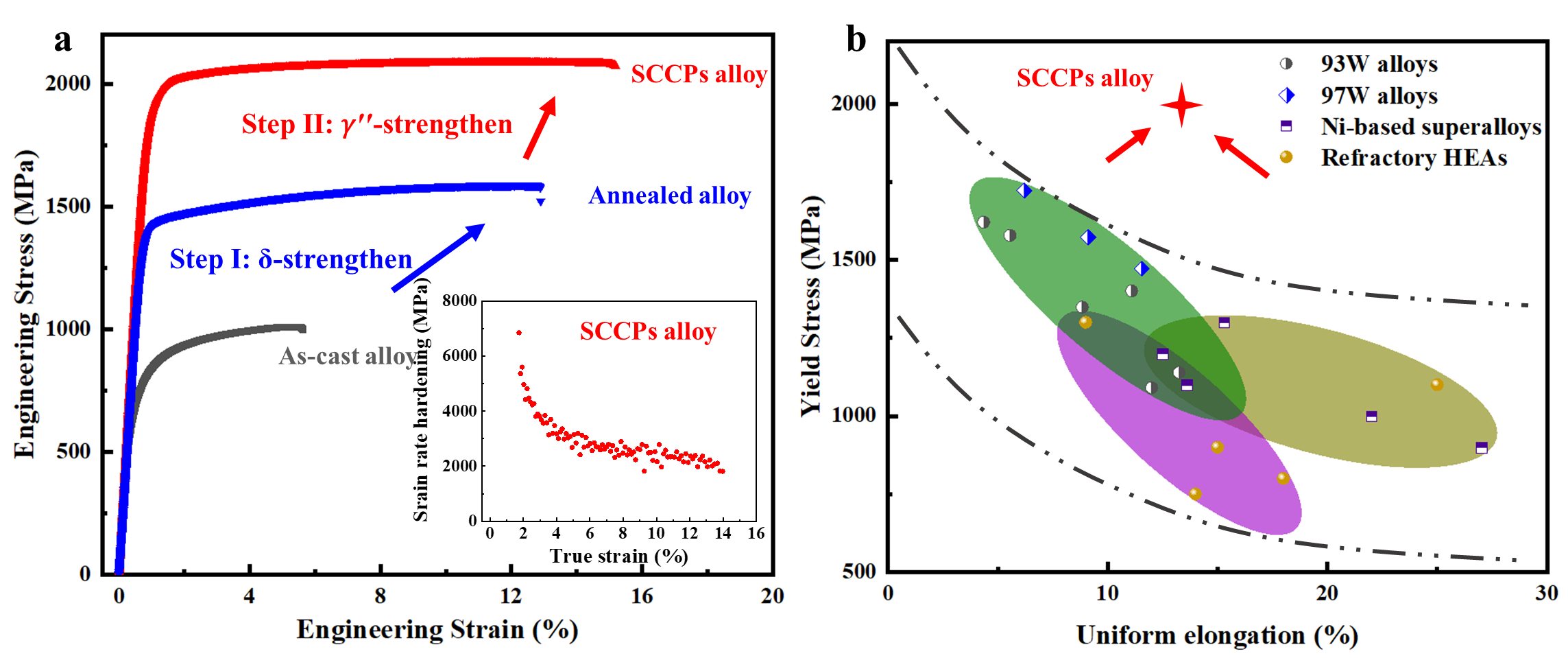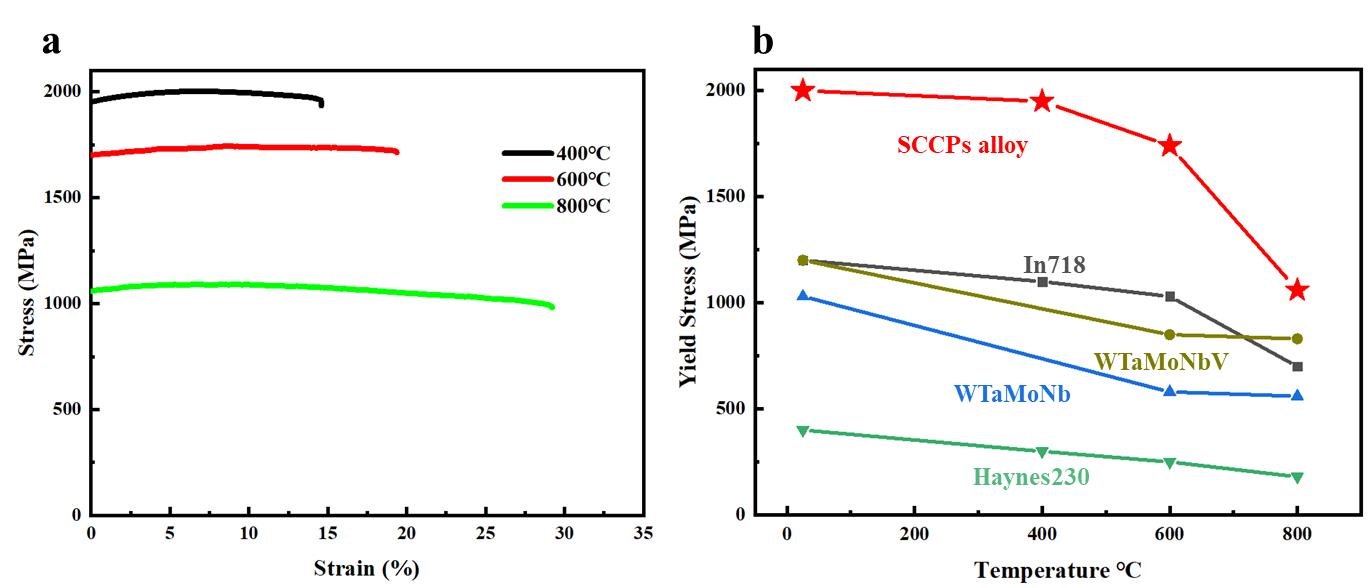- Home >> News >> Highlights
Highlights
The Institute of Mechanics has developed an ultra-strong tungsten high entropy alloy
Recently, the team of Lan-Hong Dai, Institute of Mechanics, Chinese Academy of Sciences, together with the University of California, Berkeley, Beihang University, Hong Kong Polytechnic University and City University of Hong Kong, has made important progress in the research of ultra-high strength tungsten high entropy alloy. The researchers proposed a novel stepwise controlled ordered nano-precipitation strengthening strategy, which successfully achieved a double-coherent nano-precipitates controlled by δ-lamellar and γ"-particle precipitation at high temperature (900℃) and medium temperature (650℃) (Figures 1-2). The prepared tungsten high-entropy alloy material has an ultra-high strength of 2.15GPa with a tensile plasticity of 15% (Figure 3). Meanwhile, the tungsten high-entropy alloy can still maintain a high yield strength of over 1GPa at a high temperature of 800℃ (Figure 4). Compared with the reported tungsten alloys and refractory high entropy alloys, the strength-plastic synergism of the developed tungsten alloys is at the best level in the world. The researchers systematically characterized the microstructure of different tensile deformation stages and revealed that the dislocation slip shears two coherent precipitates and maintains a perfect coherent structure, which is the main reason for the ultra-high strength and excellent plasticity of the alloy. After the dislocation shears δ lamellar, the lamellar layer has a significant local strain, while maintaining a continuous crystal structure (Figure 5), effectively releasing the stress concentration caused by pile-up of dislocation, and avoiding brittle failure caused by premature crack initiation. After the dislocation shearing coherent γ" precipitation, coherent strengthening, ordered strengthening occurs, which further increases the strength of the material (Figure 6). The strength and plasticity of the alloy are enhanced synchronously by the synergistic strengthening of two different nano-precipitated. The stepwise controllable precipitation structure realizes the ultra-high strength plasticity of tungsten high entropy alloy, which provides a new paradigm for the development of advanced materials.
This research result was recently described as "Ultra-strong tungsten refractory high entropy alloy via stepwise controllable coherent. nanoprecipitations" was published in Nature Communications, 2023, 14, 3006, with Tong Li as the first author.The research has been supported by the National Natural Science Foundation of China, the major project of "Plastic Flow and strengthening and toughening Mechanism of Disordered Alloys", the Basic Science Center project of "Multi-Scale Problems in Nonlinear Mechanics".
Paper linkage: https://www.nature.com/articles/s41467-023-38531-4

Fig. 1. Evolution of stepwise controlled precipitation structure. a-c are the schematic diagrams of structural evolution, d and c are the EBSD images of the corresponding stages, and f-i are the TEM images of the corresponding stages.

Fig. 2. Crystallographic relationship between differential coherent precipitates and matrix and element distribution. a and b are δ and γ" precipitation spherical aberration correction TEM images, c and d are δ and γ" precipitation elements distributions 3D atomic probe technology analysis, e and f are the corresponding one-dimensional elements distributions.

Fig. 3. Quasi-static tensile properties at room temperature and comparison with other materials.

Fig. 4. Quasi-static tensile properties at high temperature and comparison with other materials.

Fig. 5. TEM images of the lattice continuity after the dislocation shear the δ lamella.

Fig. 6. TEM images of dislocations shear γ" particles.
